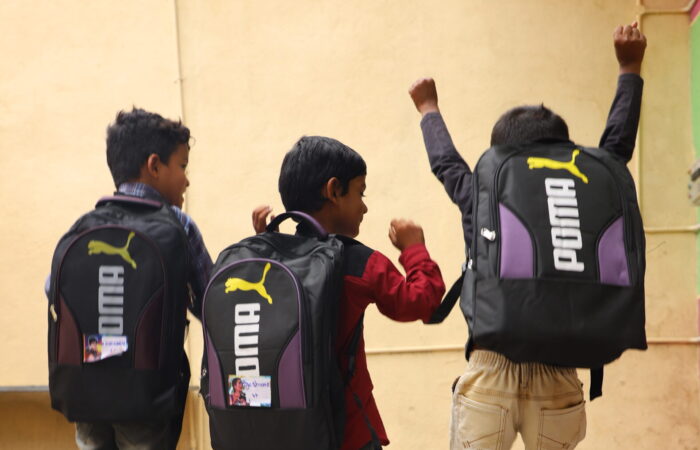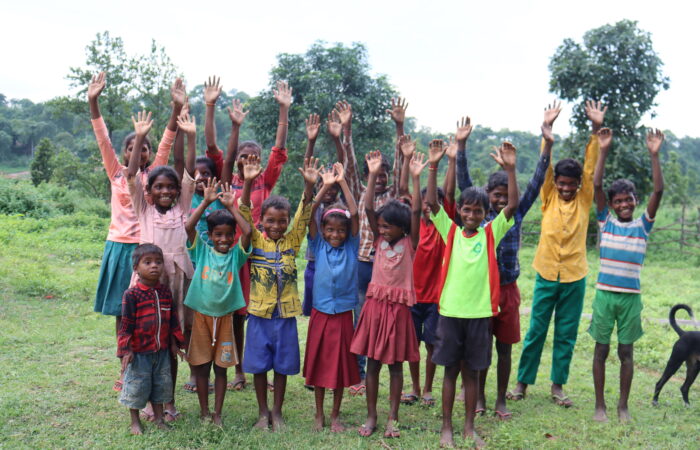Child labor has long been a major issue in India, affecting millions of children throughout the country. These children are denied the fundamental rights to education, play, and a healthy upbringing. The fight against child labor is about more than just rescuing children from dangerous work; it is also about tackling the underlying causes and providing long-term solutions. One of the most effective methods to interrupt the pattern is to offer assistance and ensure access to education. This essay delves into the realities of child labor in India, highlighting how support networks and education can help remove the problem.
The Current Scenario of Child Labor in India
Despite several laws and measures, child labour is still a major issue in India. According to UNICEF, millions of children aged 5 to 14 work in hazardous conditions such as manufacturing, agriculture, mining activities and domestic chores. These children frequently work long hours for minimal wages and are subjected to abuses and exploitation.
The issue of child labour is more pervalent in rural areas, where families confront great deal of poverty due to socio-economical and geo-political disparities. Children living in these communities are forced to work to support the basic survival needs of their families. In cities, many youngsters work in informal sectors such as street vending, small-scale manufacturing, and household work.
Child labor persists due to various circumstances, including poverty, lack of education, limited employment opportunities for adults, inadequate outreach of social welfare schemes and deeply ingrained societal norms.
The Role of Poverty in Perpetuating Child Labor
Poverty is one of the primary causes of child labor. Families struggling to satisfy basic needs frequently have no choice but to send their children to work. When families are living hand to mouth, the immediate revenue gained by a child’s labour may appear more important than sending them to school.
Furthermore, many impoverished families do not have access to inexpensive education and healthcare. School clothes, books, and transportation might be prohibitively expensive. This forces parents to engage their children in earning to support the basic survival needs instead of sending them to school.
Breaking the cycle of poverty is critical to ending child labor. Families must be given alternate means of income, as well as support mechanisms, so that their children can attend school instead of working.
The Importance of Education in Eradicating Child Labor
Education is essential to stopping the cycle of child labor. Children who could access quality education are more likely to pursue better options for their socio-economical advancements as adults, thus ending the cycle of poverty. An educated child not only benefits their family in the long run, but also contributes to the national economy and progress.
When children access quality education, they learn the skills,d knowledge and develop intent to enhance their quality of life.. Education also helps children learn and imbibe a range of life skills (such as self awareness, communication, assertiveness, critical thinking, problem-solving skills, and emotional resilience). Most significantly, educated youngsters are empowered to advocate for their rights and seek better prospects.
Hence,, to address the menace of child labour, access to quality education for all children is paramount with specific reference to those living in remote areas and belonging to the disdvantaged communities..Governments, non-governmental organisations (NGOs), and local communities must collaborate to ensure all children have access to quality and inclusive education.
Support Systems to Combat Child Labor
Ending child labor requires more than just laws and regulations; it needs strong support systems to enable and empower the children and their families. Several organisations and mainstream government agencies and institutions are working towards rescuing children from labour, rehabilitating them,and reintegrating them into schools.
- Rescue and Rehabilitation Programs: NGOs and government agencies rescue children from hazardous work environments, providing them with shelter, medical care, and counseling. Rehabilitation centers also offer vocational training and life skills to help children transition into safe environments.
- Convergence of social protection packages: Increased outreach of social protection and social welfare schemes along with family level convergence of relevant schemes will enable the families to find alternative solutions to the erstwhile earning from their children. The key government flagship schemes (such as the Mahatma Gandhi National Rural Employment Guarantee Act (MGNREGA), Ayushman Health card, Educational support schemes for children, schemes for diverse range of gainful livelihood activities and other schemes) will contribute significantly towards the cause of child labour. Additionally, programs like midday meals in schools, access to educational support for children (such as school uniform, educational materials and scholarships) and efforts on quality educational services in school, encourage the parents to send their children to school.
- Community Awareness and Involvement: Educating communities about the harmful effects of child labor is crucial. Many families engage in child labor without fully understanding the long-term consequences in the lives of their children. Community leaders, educators, and social workers play a vital role in spreading awareness about the importance of education and the risks of child labor.
- Legal Enforcement: While India has laws in place to prevent child labour, enforcement remains a challenge, especially in remote areas. Strengthening labor laws and improving their enforcement, access to social protection schemes (exclusively meant for continuation of school education) and effective functioning of mandated child protection institutional structures can ensure that children are not employed in any form of labour activities (with special mention of harmful and hazardous work conditions). Penalties for violating child labour laws must be strictly imposed to offenders.
Challenges in Implementing Education and Support Programs
Despite the importance of education and support systems, several challenges hinder their effective implementation:
- Accessibility: In remote areas, schools are often far away, making it difficult for children to attend regularly. Lack of proper infrastructure, such as roads and transport, adds to the problem.
- Quality of Education: Even when children attend school, the quality of education is often poor with specific reference to the remote geographic regions. Further inadequate staffing of teachers, undertrained school teachers, irregular attendance of teachers in schools, and inadequate availability of learning resources like textbooks, computers, and limited teaching aids are the hindering blocks to ensure continuity of school education. As a consequence, inadequate access to quality education, children are unlikely to stay in school and may return to work.
- Cultural Barriers: In some communities, cultural norms and traditions prevent children, especially girls, from attending school. Parents may prioritize early marriage or view education as unnecessary for girls. Changing these deeply ingrained beliefs is crucial to ensuring all children have access to education.
- Economic Dependency: Many families rely on the immediate financial support that child labor provides. Even with financial assistance programs, families may hesitate to send their children to school, fearing loss of income.
The Way Forward: Solutions for Breaking the Cycle
To break the cycle of child labor, a multi-faceted approach is needed:
- Strengthening Educational Infrastructure: Governments should invest in building and improving schools, especially in rural and marginalized areas. Schools must be safe, well-equipped, and staffed with qualified teachers to provide quality education.
- Creating Livelihood Opportunities for Adults: Providing sustainable employment for adults can reduce the economic pressure on families and remove the need for child labor. Programs aimed at skill development, especially for women, can empower families economically.
- Encouraging Community Participation: Communities must be actively involved in combating child labor. Awareness programs, led by local leaders, can help change attitudes toward education and reduce acceptance of child labor. Empowering families with knowledge about the long-term benefits of education is key.
- Expanding Social Support Programs: More comprehensive social protection programs, including free or subsidized schooling, healthcare, and nutrition, can provide the necessary support for families in need. Expanding midday meal programs and offering scholarships can also motivate parents to send their children to school.
- Enforcing Child Labour Laws: Strengthening the enforcement of child labor laws is critical. Government bodies must work closely with communities, child protection institutional structures and 3-tier Panchayati Raj Institutions to ensure that child labour is identified and reported, and that offenders are prosecuted.
Conclusion
Child labour is a complex issue in India, with roots in poverty, a lack of education, and societal standards. Breaking the vicious cycle of poverty necessitates a multi-pronged and integrated approach that renders strong support structures, access to quality education and enforcement of laws/ regulations directed at prohibition of child labour. By empowering families, educating children, and enhancing awareness about social protection schemes, India may go closer to abolishing child labour and providing a better future for children and contribute in accomplishing SDG 8.7. The path ahead is difficult, but with collaborative and synergetic efforts among all, we can end the cycle of child labour and give children the childhood and chances they deserve.


